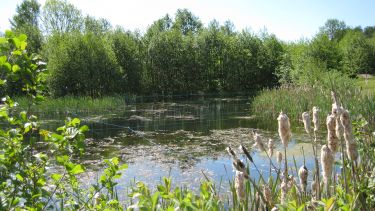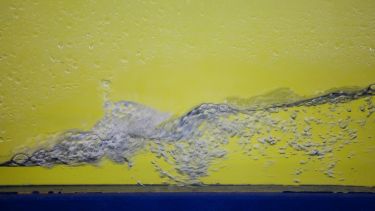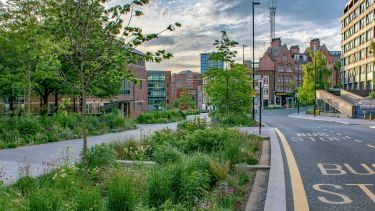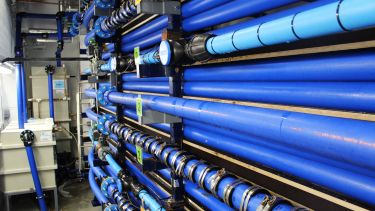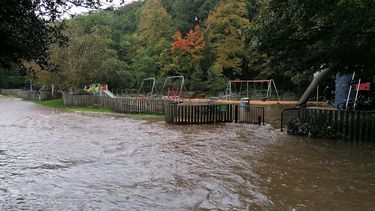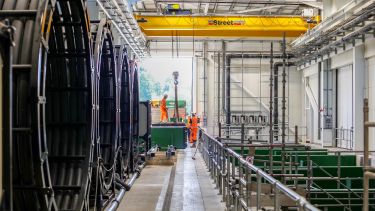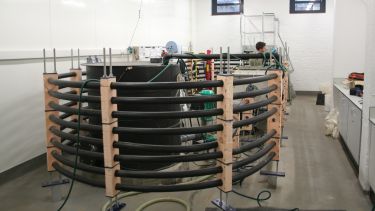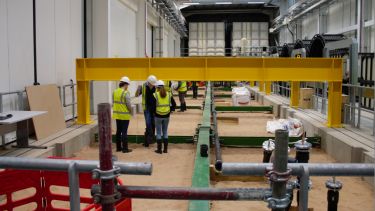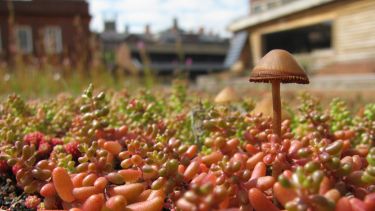Water Engineering group
The Department of Civil and Structural Engineering hosts the UK's largest urban water research group, bringing together people from different expertise to advance engineering and scientific knowledge across all aspects of water engineering and management.

Projects | Facilities | People
Research topics
Our research builds upon a culture of nurturing and addressing industry needs in collaboration with a range of stakeholders to provide innovative solutions to challenging problems. Our activities span a range of fundamental, experimental and applied research, including many aspects of understanding and modelling hydraulics and hydrological processes, hydrogeology, drainage and flood risk management, potable water distribution infrastructure, environmental fluid mechanics, surface mixing processes and sediment transport.
- Environmental Fluid Mechanics
-
Our research covers coastal and river hydrodynamics- impacts of vegetation on flow and mixing processes/pollutant transport in natural and engineered contexts; and numerical modelling.
Core members:
Ian Guymer, Georges Kesserwani, Alma Schellart, James Shucksmith, Virginia Stovin & Simon Tait - Groundwater Protection and Restoration
-
Our research involves laboratory, field and modelling applications on: groundwater hydrology; contaminant hydrogeology; fate transport and remediation of subsurface pollutants; site characterization and risk assessment.
Group members:
Domenico Bau & Steve Thornton - SuDS (Sustainable drainage systems) and Urban Drainage
-
Our work areas include hydrological performance model development for vegetated SuDS (including green roofs); rainfall and uncertainty analysis; urban flooding as well as use of field and laboratory observations and CFD models to understand hydrodynamics and pollutant transport processes in drainage systems.
Group members:
Joby Boxall, Ian Guymer, Georges Kesserwani, Andy Nichols, Alma Schellart, James Shucksmith, Virginia Stovin & Simon Tait - Water Distribution Systems and Infrastructure
-
Our research covers application of advanced modelling tools; laboratory and field work to hydraulic and water quality interactions in piped networks; including leakage; discoloration and pressure transients.
Group members:
Joby Boxall, Richard Collins, Isabel Douterelo, Ian Guymer, Stewart Husband & Vanessa Speight - Catchments and River Engineering
-
Our research involves flooding; hydrodynamic modelling; water quality processes and modelling; pollutant dynamics and transport; urban/rural interactions; eco hydraulics.
Group members:
Ian Guymer, Georges Kesserwani, Charles Rouge & James Shucksmith - Flooding
-
Improving our resilience to flooding is a key societal priority and engineering challenge.
Aided by access to unique facilities, expertise and close links with industrial partners, our flooding research covers a range of topics including numerical and physical modelling, urban stormwater management, sensor development and testing, drainage infrastructure control and management as well as risk and hazard evaluation.
Core members:
Dr George Kesserwani, Dr James Shucksmith, Dr Andy Nichols, Dr Lis Bowman, Prof Virginia Stovin
Research projects
Our research builds upon a culture of nurturing and addressing industry needs in collaboration with a range of stakeholders to provide innovative solutions to challenging problems.
Current projects:
PODDS+
'Material Destiny'!
TWENTY65
Urban Green DaMS: Design and Modelling of SuDS
Recent projects (5 years):
Pennine Water Group website
Quics website
CENTAUR website
INTERACT website
Further projects can be found on the Our Research Projects webpage
Facilities and resources
Our water engineering activities make use of a variety of innovative facilities and resources, and provide us with the capability to undertake world leading research studies and commercial testing.
- National Distributed Water Infrastructure Facility @ ICAIR
-
The facility is based within the Integrated Civil and Infrastructure Research (ICAIR) building providing ≈600m2 of specialist laboratory space. The key experimental infrastructure is a test cell (1350 m3) in which urban water infrastructure assets (e.g. interconnected water pipes, sewer pipes/chambers, inlet structures) and natural artefacts such as impermeable and permeable catchment surfaces, soil layers and voids can be created, with in-situ instrumentation to allow for their interactions with the urban water infrastructure assets to be studied. The test cell is 45m long by 5m deep by 6m wide. The length includes allowances for free surface control and stilling sections for both sewer and ground water flows at entry and exit of pipes without the use of elbow fittings which would induce unwanted dynamic reflection points. This design provides a straight test length of around 38m. This length is sufficient for studying hydraulic processes of interest in distributed urban water infrastructure. The depth and width of the test cell is necessary such that fully representative burial depths can be accommodated (up to 1.5m for water supply and 3m for sewers) and that surface loading effects can interact with such assets without distortion by boundary effects. This full-scale environment can be subjected to a controlled regime of sub-surface, pipe and surface flows and physical and chemical loadings and then the performance of the representative part of the urban water infrastructure system will be monitored.
The facility can generate in-pipe and surface flows of up to 200 l/s and subject pipes to pressure transient shocks of up to 10 bar to create conditions for hydraulic capacity exceedance, pipe bursting and contaminant ingress. Complex cyclic loads of up to 10kN/m2 will can be imposed on the contained soil and pipes, via controlled actuators to simulate physical surface and axial loading so the test cell has the ability to examine the role of various repeated and sustained loading types that cause the failure of a wide range of urban water assets.
See iCAIR capabilities.
- Pipe systems
-
The vast majority of the world's most precious and widely used resources are transported in pressurised pipe systems. The facilities at the University of Sheffield, focussed on transportation of water, allow us to study the hydraulics of these systems, the interaction between the hydraulics, the pipes and other infrastructure, and the microbiological environment that these pipes present.
-
Temperature controlled potable water system for biofilm growth/examination 3 x 200 m of 90 mm pipe that can be run independently or as a combined system to explore how hydraulics interacts and influences water quality in distribution systems.
- Transient Dynamics: Copper pipe loop. 150 m of 10 mm diameter copper pipe that is used to explore the transient propagation in long pipelines. This system is scaled to represent a large scale pipeline and was originally designed to explore leak detection approaches in large trunk mains.
- Contaminant Ingress test rig 120 m x 90 mm pipe. Designed to allow for the exploration of hydraulic transients in water pipes and the potential for intruding contaminants in distribution systems, this facility has allows for research into all aspects of the dynamics of pipe flow and its interaction with the pipe infrastructure.
-
Pipeloops in the National Distributed Water Infrastructure Facility @ ICAIR. There is the capability of undertaking research on full scale buried pressurised pipelines at the ICAIR facility. Research can focus on all aspects of buried pipes from the hydraulics to the interaction between the pipes and soil loadings
For more information contact Dr Richard Collins
-
- Open channel flumes
-
-
1.2 m wide, 0.6 m deep, 15 m long fibre glass panelled flume
-
Annular flume in temperature controlled laboratory
-
300 mm x 450 mm x 12 m glass flume
-
500 mm x 500 mm x 16 m glass panelled flume with pump and flow control
For more information contact Professor Ian Guymer
-
- Model aquifer facility
-
- 40 m long x 6 m wide x 5 m deep model sandy aquifer with flow control systems for experimental research
- See ICAIR
For more information contact Professor Steve Thornton
- Urban drainage
-
- Surface/Sewer flows interaction facility, 8 m x 4 m surface linked to a 75 mm drainage pipe work by a 240 mm ‘manhole’.
- Hydrological Performance Test Beds
- 300 mm dia x 20 m clear acrylic pipe test rig with pump and flow control
- Real Time Control Test facility, 35 m of 200 mm pipe with 4, 1 m diameter manholes. Featuring automated gate and depth sensors.
- ICAIR/PLEXUS
For more information contact Dr James Shucksmith
- Green Infrastructure
-
- 12 off green roof test rigs with flow monitoring and moisture data collection system
- 2 x 300 mm diameter infiltration columns for unsaturated hydraulic conductivity measurements. The systems include: controlled inflow/rainfall; moisture content sensors and tensiometers within the sample; and drainage/runoff measurement below the columns.
For more information contact Professor Virginia Stovin
- Settling Column
-
- 300 mm dia x 6 m tall settling column with Electrical Resistance Tomography (ERT) sensor
For more information contact Dr Andy Nichols
People
Our dedicated staff that make this research possible.
Academics
| Name | Research Discipline | Title |
|---|---|---|
| Groundwater Protection and Restoration | Senior Lecturer | |
| Water Distribution Systems and Infrastructure | Professor of Water Infrastructure Engineering EPSRC Challenging Engineer |
|
| Water Distribution Systems and Infrastructure | Senior Lecturer in Water Engineering | |
| Water Distribution Systems and Infrastructure | Lecturer in Water Engineering | |
| Environmental Fluid Mechanics SuDS (Sustainable Drainage Systems) and Urban Drainage |
Professor of Civil Engineering | |
| Environmental Fluid Mechanics SuDS (Sustainable Drainage Systems) and Urban Drainage |
Senior Lecturer in Catchment Science | |
| SuDS (Sustainable Drainage Systems) and Urban Drainage | Senior Lecturer in Water Engineering | |
| Water Distribution Systems and Infrastructure |
Senior Lecturer in Water Resilience |
|
| Environmental Fluid Mechanics SuDS (Sustainable Drainage Systems) and Urban Drainage |
Senior Lecturer in Water Engineering | |
| Environmental Fluid Mechanics SuDS (Sustainable Drainage Systems) and Urban Drainage |
Senior Lecturer in Water Engineering | |
| Environmental Fluid Mechanics SuDS (Sustainable Drainage Systems) and Urban Drainage |
Professor of Green Infrastructure for Stormwater Management | |
| Environmental Fluid Mechanics SuDS (Sustainable Drainage Systems) and Urban Drainage |
Professor of Water Engineering | |
| Groundwater Protection and Restoration | Professor in Environmental Engineering Science | |
|
Water Distribution Systems and Infrastructure |
Professor of Integrated Water Systems | |
| Water Distribution Systems and Infrastructure | Research Fellow of Drinking Water Quality | |
| Water Distribution Systems and Infrastructure | Research Fellow in Water Systems Microbiology |
Further Research contacts can be found here.

